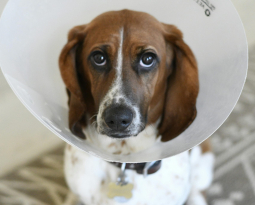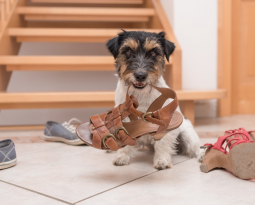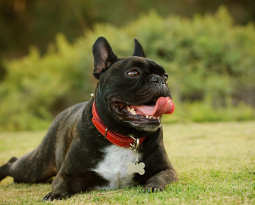Dogs have several behaviors which are natural to them but, in many cases, may become problematic as well. The issue with a dog displaying behavioral problems is that the owners may not understand and are likely to mishandle it. Let’s talk about what behaviors to look for.
So, if you’ve just gotten a dog or plan to get one, you must understand common dog behaviors and the problems they may pose. This will help you to prevent these problems and handle them appropriately if or when they come up. One thing you must know, though, is that giving your dog a strong foundation in obedience training will make it easier for you to prevent or solve these issues if they come up.
Here are some common dog behaviors to watch out for:
Barking
Dogs are known to bark. This is typical dog behavior and ordinarily shouldn’t be a problem. Dogs vocalize in several ways, such as barking, howling, and whining. However, your dog has a behavioral problem if it barks excessively.
There are different types of barking for dogs. Some of the common types are:
- Alert or warning
- Attention-seeking
- Excitement and playfulness
- Boredom
- Anxiety
- Response to other dogs.
The first step to correcting excessive barking in your dog is to determine why it is vocalizing in that manner. To control this behavioral problem, you must teach your dog the bark and quiet commands. Be patient and consistent, and address the underlying cause of the excessive barking.
Chewing
This is another natural dog behavior and is considered an important activity for many dogs. One can say that’s how dogs are wired. There are different reasons why dogs chew. Some of these are:
- Excessive energy or boredom
- Puppy teething
- Curiosity (especially in puppies)
- Anxiety
Chewing can, however, become a behavioral problem when it becomes excessive. In most cases, excessive chewing behavior in dogs leads to the destruction of human properties. You may not, and probably shouldn’t, stop your dog from chewing, but you must make sure it chews on the right things alone. You can do this by providing different chew toys for your dog and putting away your items from the dog. If you have to go out, keep the dog confined somewhere to cause little to no destruction.
Also, if you see it chewing on the wrong thing, create a sharp noise to distract the dog and replace what they’re chewing on with something more appropriate – a chew toy. Another thing you can do is to ensure your dog does plenty of exercises so that it gives off some energy instead of turning to chew.
Chasing
If your dog is known for chasing moving things, it’s a show of their predatory instinct. Some dogs chase people, cars, and other animals, which may lead to devastating and dangerous outcomes. Chasing is instinctive dog behavior, and it may be tricky or impossible for you to stop it. However, you can prevent it or any negative outcome that it may result from by:
- Keep your dog on a leash or confined at all times.
- Training the dog to come to you when you call.
- Having a dog whistle to get its attention when you need to.
- Being aware and watching for things that may potentially trigger them to chase, such as joggers.
The best way to ensure your dog’s chasing behavior doesn’t get out of hand is to train the dog to first focus its attention on you before it runs off.
Jumping Up
Jumping up at the owner or a familiar face is a natural and expected dog behavior. Puppies do it to reach their mothers, and as they grow older, they jump to greet people. They may also jump up when they see an item that they want in someone’s hand or when they’re excited.
Jumping up is mostly attention-seeking dog behavior. If you acknowledge the dog’s action, you’re giving it instant satisfaction, and you’ll be reinforcing the behavior.
You should try to stop your dog from running, and there are several methods to do this, such as grabbing the paws, lifting a knee, and in some cases, pushing it away may work. However, this may send the wrong message to the dog.
The best thing to do is to ignore the dog completely, turn away, and walk away without making eye contact, touching, or speaking to the dog. Then, continue your business without paying attention and when the dog relaxes, reward him for calming down. They’ll get the message soon enough.
Conclusion
You need to stop some of your dog’s behaviors when it becomes excessive because they may become harmful. Otherwise, they’re the natural behavior of dogs.







